6 Things You Absolutely Need To Know Before Buying A Farmhouse Table
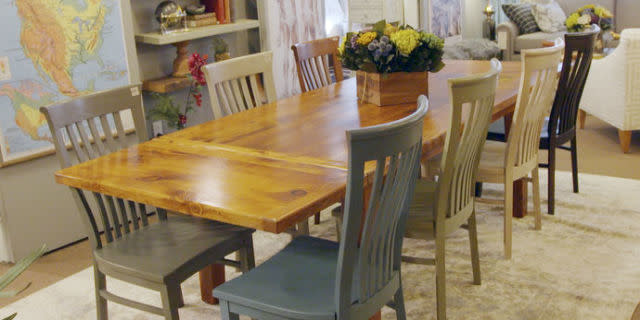
The Farmhouse Store has the Target effect - the one where you go in needing one thing and head home with a trunk full of stuff. With furniture that straddles the line between country and contemporary and tchotchkes that seem more necessary than frivolous, it's a veritable playground for design junkies, including big-name HGTV stars like Vern Yip and Fixer Upper's resident carpenter Clint Harp. (The store's owner Ed Menapace is even friends with Chip and Jo.)
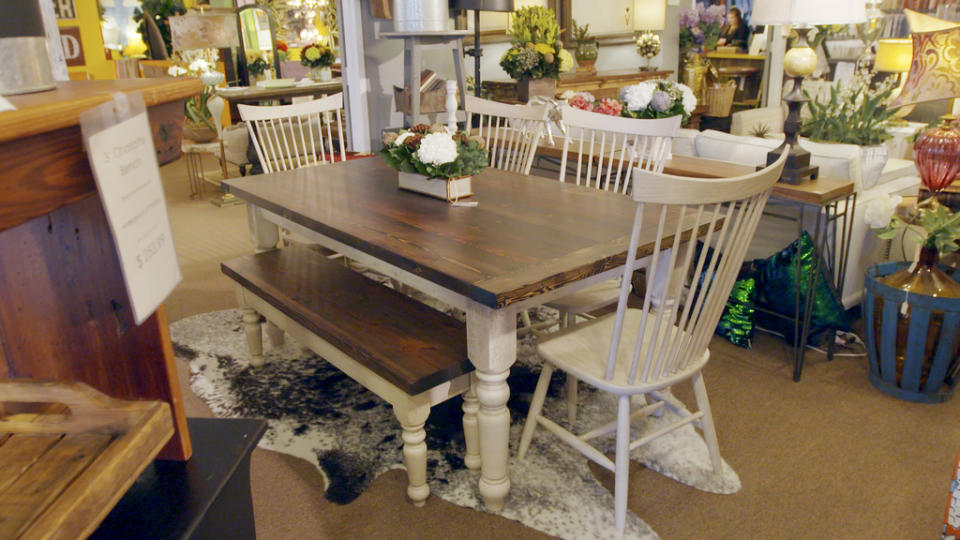
When you enter, you'll want to see yourself straight to the shop's second floor furniture showroom. That's where Menapace displays his three distinct styles of farmhouse tables, named for the centuries-old barn wood they're made from. If they stop you in your tracks, you're not alone: The Farmhouse Store fields more than 400 custom requests for one every year. To join the ranks, though, you've got to arm yourself with knowledge. These are the six things you should know before buying a farmhouse table.
1. If you like to eat, fill in the holes.
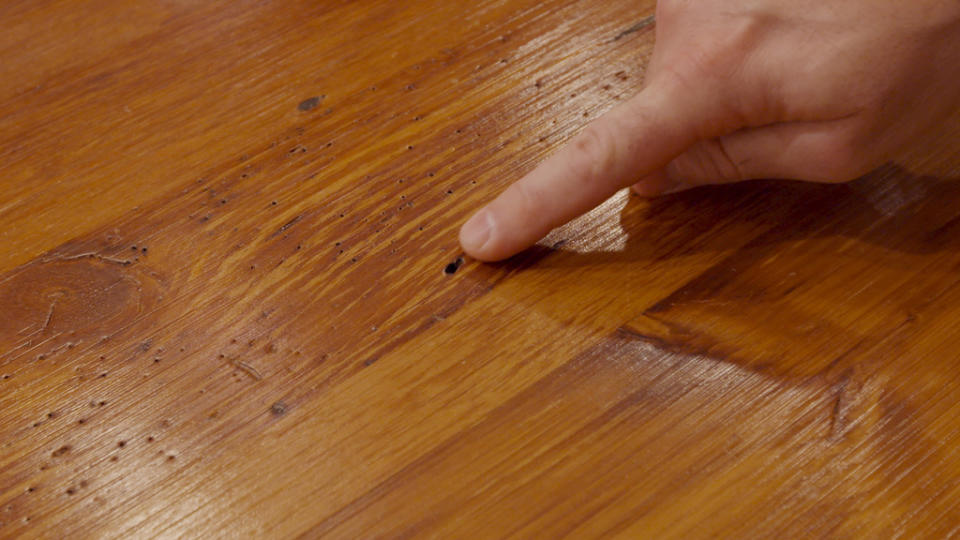
Once it's dried out, sanded, and stained, barn wood looks nearly new - except for the gaping holes that weather and nails can leave. Menapace likes to leave a few for character, but concedes that the less holes you have, the easier it is to clean crumbs and dirt from the surface.
2. The style is in the legs.
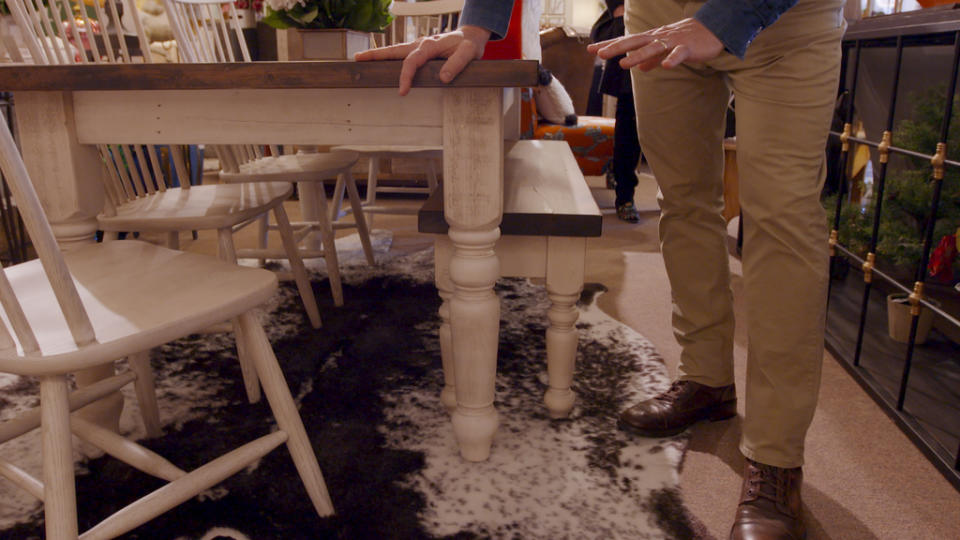
The Farmhouse Stores offers three takes on a farmhouse table base, and the difference comes down to the legs. Tapered legs are streamlined and thin, and they make the tables appear more modern than the age of the wood would indicate. Turned legs (they're the kind with multiple rounded edges) will give a farmhouse table a country feel. It's an old-school woodworking technique that also lends a vintage look to a table. Traditionally speaking, trestle legs consist of two or three vertical posts linked by one long horizontal beam, but in regards to Menapace's tables, it indicates a super-thick, edgy leg that reads more luxe than the others.
3. Tables wear aprons, too.
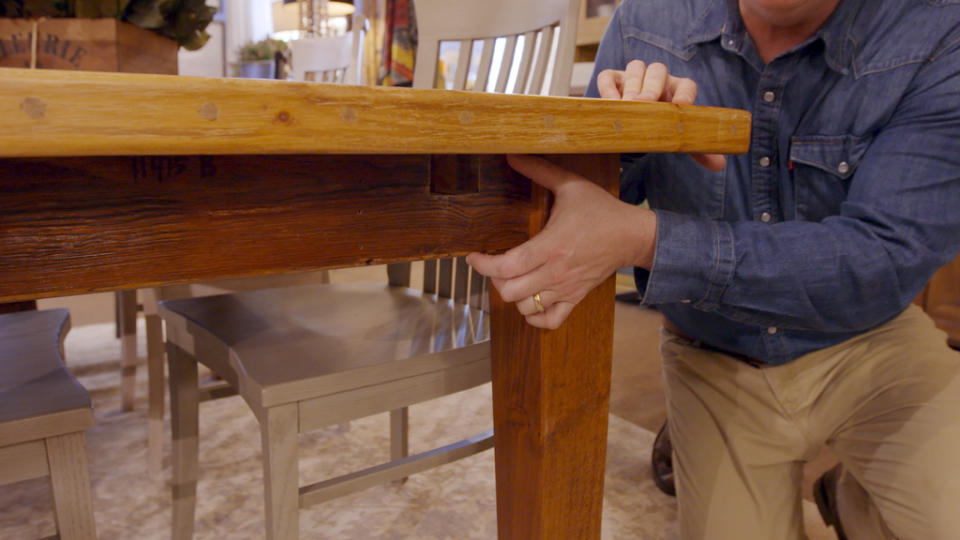
They're the pieces of wood that extend just below the surface of the table, and they originally had a practical use: to hold the legs onto a table. Nowadays, they serve more of an aesthetic purpose, so tall shoppers should keep this in mind: An apron can cut into the tops of your thighs, which means you should buy lower chairs or skip the extra piece of wood.
4. Entertainers should invest in company boards.
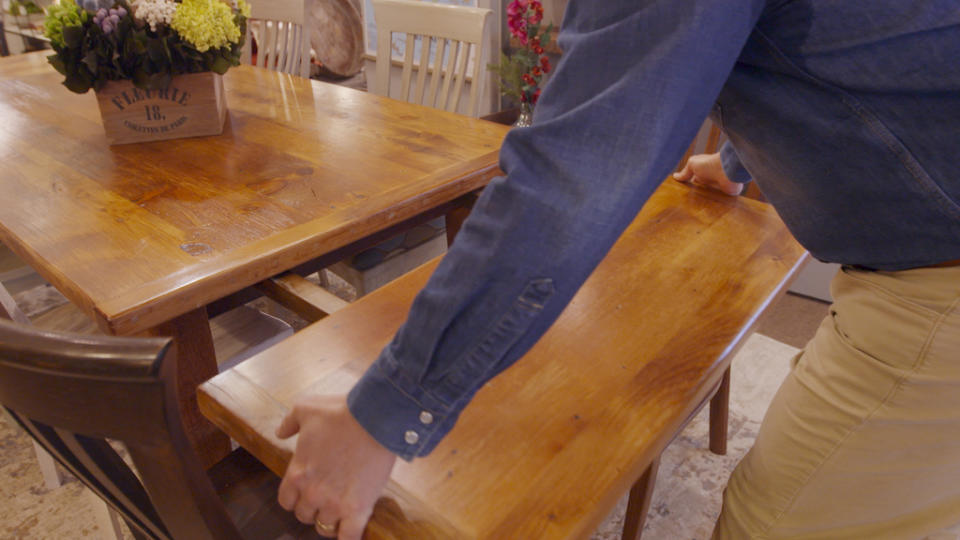
You've probably heard of leaves, the matching inserts that extend the length of a table. They usually go smack in the middle of a table though, leaving you with unsightly lines down the center both when the leaves are in or out. To protect the farmhouse look, Menapace prefers to make his tables with company boards. (They're called that because people reach for them when friends and family visit.) His slide into the ends of the table.
5. You need one foot of table per person.
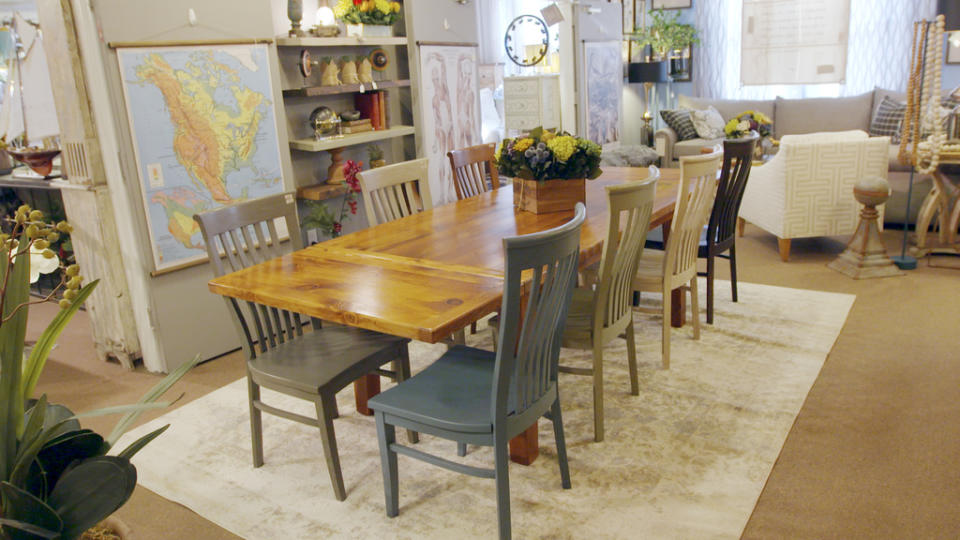
One of the most common questions Menapace gets is "How long should my table be?". He landed on this simple explanation: You should have about one foot of table per person. So if your table's a landing spot for your family of four, you can opt for a shorter 4-footer. But if you're a consummate entertainer and regularly set the table for 12, get one that's just as many feet long.
6. The options are endless.
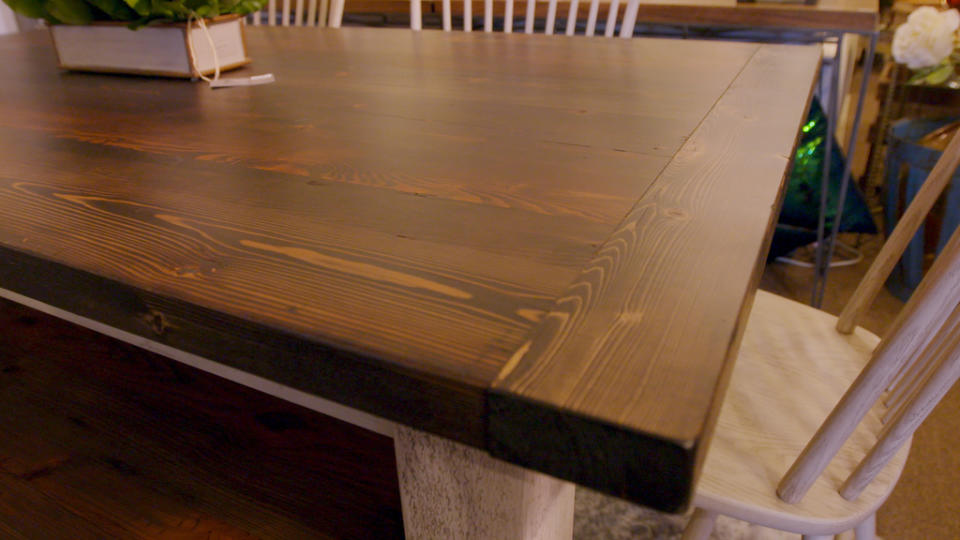
They don't stop at the legs: Menapace and his team create their own stains, and his two most popular are a medium, natural hue (it shows most of the wood's natural grain and knots) and an espresso finish. Any stain you get can be made both glossy and matte, too - and Menapace has been noticing a major uptick in the latter. If you're leaning towards something trendy, matte is the way to go, but glossy still remains a customer favorite.
You Might Also Like


